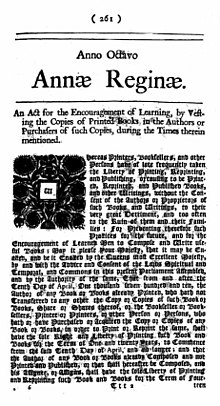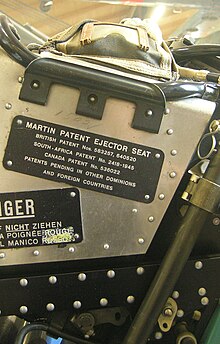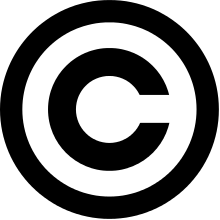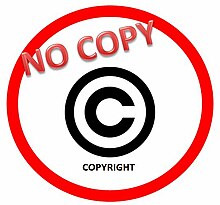Intellectual property
Intellectual property refers to an economic and cultural asset that includes intangible products, as well as physical products, recognized in most countries' laws and subject to economic exploitation by third parties. the legal holders of said property. In a strictly legal sense, intellectual property is what is protected by intellectual property laws, and any intellectual production not explicitly included in the legislation cannot be considered intellectual property in a legal sense. Thus, intellectual property rights protect the interests of creators by offering them prerogatives in relation to their creations.
For the World Intellectual Property Organization (WIPO) any creation of the human mind is part of intellectual property, however, formal legislation does not guarantee the exclusive exploitation of intellectual creations to their authors of any type of creation, but only of some forms of intellectual production explicitly included in said legislation. The delimitation of what constitutes intellectual property depends on the legislation and is subject to continuous renewal. On the one hand, intellectual property has to do with the intentional creations of an individual in a planned manner, among these would be, for example: inventions, literary and artistic works, symbols, names, images, drawings and models used in trade. Usually scientific theories or discoveries are deliberate intellectual productions but the laws do not consider them as objects protected by intellectual protection laws.
Rights related to copyright are the rights of performers to their performances, the rights of phonogram producers to their recordings, and the rights of broadcasters to their radio programs and of TV.
World Intellectual Property Day is celebrated on April 26.
History
Renaissance
The spread of movable type printing in Renaissance Europe, and with it the new ideas of Erasmusians and Christian reformers, quickly alarmed the Catholic Church, the princes and the republics of the European continent. They then used the legal tradition that protected feudal urban guilds to effectively control what was published. The first monopolistic legal framework was still a feudal framework whose objectives were political control of the nascent public agenda, so the author did not appear as a subject of rights, but rather the printer.
This state control (partly delegated to the Church in the Catholic world), however, facilitated the appearance of the first patents. The first of which there is evidence is a monopoly patent of the Republic of Venice of 1474 in favor of Pietro di Ravena that assured that only he himself or the printers that he ruled had the legal right within the Republic to print their work "Phoenix". The first patent of this type appeared in Germany in 1501 and in England in 1518, always for specific works and always as a royal monopoly grace. This is a practice, that of granting royal monopolies in the form of a patent, which the European monarchies were extending in different areas as a form of remuneration for their collaborators.
The Baroque
The 17th century saw different attempts at regulation in order to ensure literary authors a share of the profits obtained by printers. That was the sense, for example, of the provisions of 1627 of Felipe IV in Spain. What motivated this regulation is precisely the absence of a monopoly of the author with respect to the work. Since any printer could republish any work, the legislator sought to maintain the author's incentives and forced him to share a part of the profits obtained.
But the first intellectual property legal system configured as such arose in Baroque England. It is the so-called Statute of Anne (by the name of the queen in whose reign it was promulgated, Anne of England) of 1710. The importance of this norm came because for the first time the characteristics of the system appeared intellectual property as they are currently known:
- It was presented as a system of incentives to authors motivated by the positive externalities generated by their work. In fact his full title was:
An Act for the Encouragement of Learning, by vesting the Copies of Printed Books in the Authors or purchasers of such Copies, during the Times therein mentioned
- It established a universal temporary monopoly system: 21 years for books published before 1710, 14 years extended by 14 others for later published books.
The conflict came with the printers, who claimed that once the works were commissioned and received, the beneficiaries of the monopoly should be them and not the original author. Thus was born the support of what would later be the difference between copyright and author's rights. While the former converts the work into one more commodity, making the privileges granted by the legal monopoly fully transferable, the latter will reserve rights to the authors beyond even after the sale.
The French Enlightenment and the debate on the nature of law
With different forms and nuances, the system gradually spread throughout Europe. Denmark and Sweden had their first legislation in 1741 and Spain in 1762, by law granted by King Charles III. But the debate on the nature of these patents remained open. While copyright tended to equate privilege with another form of property, copyright required a foundation that would ultimately equate it with a natural right, not born from a real concession, but directly claimable in an evident way... which Given the recentness of its appearance, it was by no means an easy theoretical argument, as shown, for example, in Diderot's Lettre sur le commerce des libres.
Among other arguments, Denis Diderot proposed:
Let the booker be made, let the author be made. Time will teach the author, without any intervention being necessary, the value of what he has created: it will suffice to assure the booker the acquisition and ownership of the manuscript, without which the production of the author will necessarily lose its fair price.Diderot
In the Assembly of 1791 in France, two years after the French Revolution, Jean Le Chapelier argued in favor of considering copyright as a natural right, saying:
The most sacred, the most personal of all properties is the work of the thought of a writer (...) consequently, it is extremely fair for men who cultivate the field of thought to enjoy the fruits of their work; it is essential that during their life and for a few years after their death, no one can dispose of the product of their genius without their consent.Jean Le Chapelier
These arguments had a counterpart in the statements of the philosopher and mathematician Nicolas de Condorcet, who challenged the ideas of copyright as natural law, explaining that:
Privileges have in this area, as in all other cases, the inconveniences of diminishing activity, of concentrating it on a small number of hands, of charging it with a considerable tax, of causing the country's manufactures to be lower than foreign manufacturing. They are therefore not necessary or useful and we have seen that they were unfair. [...] There can be no relation between the property of a work and that of a field that can be cultivated by a man, or of a furniture that can only serve a man, whose exclusive property, is consequence, is founded on the nature of the thing... Literary property is not a right is a privilege and like all privileges, it is an obstacle imposed on freedom, an obvious restriction on the rights of other citizens... ”Condorcet
The School of Salamanca and Natural Law
Soon the first criticisms arose, although still based on the now obsolete medieval scholasticism. Starting from Santo Tomás de Aquino's concept of the city, the school of Salamanca circumscribed in the middle of the XVIII century protection to the which will later be called moral rights, frontally attacking the equating of royal privilege with a form of property, given that ownership of ideas, knowledge and concepts cannot be claimed independently of the state, nor can transmission be carried out as a zero-sum game as it happens with the property of things. Furthermore, since property is not a natural right, its universality could hardly be argued.
The 19th century
However, the sweeping expansion of capitalism and the need for incentives to maintain the accelerated technological development after the Napoleonic wars would consolidate the logic of intellectual property and extend protective legislation.
In fact, intellectual property has historically been subservient in practice to the social needs for innovation. When Eli Whitney invented the cotton gin in 1794, no one - least of all himself - thought to file lawsuits despite the fact that he had patented it. The gin was a simple invention, which allowed the price of cotton to be drastically reduced and made the United States of America in the 1830s the great supplier of the nascent British textile manufactures. And cotton - until then equivalent to linen in price and therefore limited to the upper classes - became an affordable mass consumer good. Thanks to the cotton manufacturing industry, the United States and Great Britain went from being developing countries to being developed countries.
Another notable aspect was the spontaneous internationalization of payments to authors by publishers. It appears that during the 19th century American authors received more payments from British publishers than from their own country, despite the fact that legally the privileges were state and could not be legally claimed in other countries. It seems that, as is the case today, the main part of a work's revenues came from the first edition, which sufficiently encouraged British publishers to pay for access to content before their competitors, without having to for them to assert their legal privileges.
Despite this, the Berne Convention for the Protection of Literary and Artistic Works, convened in 1886 at the initiative of Victor Hugo -author of the first international sales successes- marked a decisive moment in the globalization of copyright law. author by forcing reciprocity in the recognition of rights to authors by the signatory countries. Although they were originally only half a dozen and exclusively European (the United States did not join until 1989) the foundations of the current scene were laid.
The 20th century
The 20th century was the century of copyright, copyright, and patents. After the Berne convention, the BIRPI (Bureaux internationaux réunis pour la protection de la propriété intellectuelle) is founded, currently WIPO (World Intellectual Property Organization). The first rights societies such as SAE (today SGAE) appeared in 1898, and pharmaceutical and technology companies consolidated their business model on the patent system. In the second half of the century, the industrial explosion of popular music and the universalization of the audiovisual market, concentrated in the United States, led to the formation of a large world cultural market dependent on the international homologation of intellectual property.
In 1986, at the request of the United States of America and other developing countries, the issue of intellectual property protection in developing countries was raised as an issue that should be part of the international trade system.
When the Uruguay Round of multilateral trade negotiations began, especially the General Agreement on Tariffs and Trade (GATT, English General Agreement on Tariffs and Trade) (now the World Trade Organization (WTO)), a special working group was included to discuss the issue of intellectual property and trade. The text of the ministerial declaration of the Agreement on Trade-Related Aspects of Intellectual Property Rights (TRIPS), also known by its English name TRIPS (Trade-Related Aspects of Intellectual Property Rights), establishes among other rules:
In order to reduce the distortions of international trade and its obstacles, and taking into account the need to promote effective and adequate protection of intellectual property rights and to ensure that measures and procedures aimed at enforcing such rights do not in turn become obstacles to legitimate trade, negotiations will aim to clarify the provisions of the General Agreement and to develop, as appropriate, new rules and disciplines...
Types of intellectual property
Intellectual property rights include patents, copyrights, industrial design rights, trademarks, plant variety rights, trade dress, geographical indications, and in some jurisdictions trade secrets. There are also more specialized or derived varieties of exclusive sui generis rights, such as circuit design rights (called mask work rights in the US), supplemental protection certificates for pharmaceuticals (after the expiration of a patent that protects them) and database rights (in European law).
Patents
Copyright
In Anglo-Saxon law, the notion of copyright (translated literally as a ‘copy right’) that—usually—understands the heritage of copyright (patrimonial rights).
In literary law, he understands the right of stories based on real facts or characters, the characters have the right to read the work, while it is written.
A work passes to the public domain when property rights have expired. This usually happens after a period of time after the author's death (post mortem auctoris). The minimum term, globally, is 50 years and is set out in the Berne Convention. Many countries have extended this deadline widely. For example, in European law, it is 70 years since the author's death; in Mexico it is 100 years. After that time, such a work can then be used freely, respecting moral rights.Industrial property
Industrial property protects brands, patents, industrial designs and drawings. It is a set of rights that a natural or legal person may own on an invention (patent, utility model, semiconductor topography, complementary certificates of protection of medicines and plant products), an industrial design, a distinctive sign (brand or commercial name), etc.
It grants two types of rights: the first is the right to use invention, design or distinctive sign, and the second is the right to prohibit a third party from doing so.
The right to prohibit (Ius banendi) is the most prominent part of the industrial property and allows the holder of the right to apply for a license, also called royalty or royalty. It has temporary limits, since almost all industrial property rights have a maximum duration, and territory as they are only valid in the territory where they have been granted (normally, but not exclusively, a country)
Other limits to the right to prohibit are the exhaustion of the rightfor which, once marketed with permission of the holder or having paid the compensation, the subsequent sale cannot be prevented; the use for experimental and non-commercial purposes, the temporary entry into the country of a means of locomotive enrolled abroad, etc.
The Paris Convention and the Agreement on Trade-Related Intellectual Property Rights are the two major international agreements on industrial property.Trademarks
For legal purposes, a brand (®) is a sign that is suitable for distinguishing a product or service on the market. When such a mark has been registered with the governmental entity, it is usually referred to as a “registered mark” (in English, trademark), which is shown abbreviated with TM symbols, MR o ®, although this is not indicative of registration before the competent authority. There is also the possibility of protecting a brand regionally in some areas such as, for example, the European Union brand (whose registration application is filed with the European Union Intellectual Property Office).
The sign of a brand can be a word or a combination of words, an Image or a design, three-dimensional shapes, sounds and in some countries, smells, textures and anyone else that meets the requirements of distinctiveness and possibility of being represented in writing or graphically.
The registration of a brand gives its owner, the possibility of authorizing or prohibiting the use of it to third parties. States generally grant legal protection tools (civil and criminal proceedings) to trademark holders to defend them from unauthorized copies.
A trademark determines the graphic/physical/operative identity of a product or service. It includes its own graphic-visual elements that differentiate the article from its competitors, providing a certain identity in the commercial sector. In addition, this is a registered identity, protected by the relevant laws that can be used exclusively.Plant varieties
Plant breeder's rights or plant variety rights are the rights to commercially use a new variety of plant. The variety must, among other things, be novel and different, and for the registration the evaluation of the propagation material of the variety is considered.
Trade Image
Trade dress is a legal term of art that generally refers to features of the visual and aesthetic appearance of a product or its packaging (or even the design of a building) that signify the source of the product to consumers.
Trade secret
A trade secret is a formula, practice, process, design, instrument, pattern, or compilation of information that is not generally known or cannot reasonably be determined, by which a company can obtain an economic advantage over its competitors. and customers. No formal government protection granted; each company must take steps to protect its own trade secrets (for example, the formula for its soft drinks is a trade secret to Coca-Cola).
Intellectual property infringements
Infringement of intellectual property rights may constitute a violation of civil or criminal law, depending on the type of intellectual property involved, jurisdiction, and the nature of the action. Some of these are:
- Infraction of copyright
- Software copyright infringement
- Patent Infraction
- Infraction of industrial property
- Registration of trademark
- Commercial image fraud
- Misappropriation of commercial secrecy
In 2011, the trade in counterfeit copyrighted and trademarked works is estimated to be a $600 billion industry worldwide, accounting for 5 to 7 percent of global trade.
Arguments in favor of intellectual property
Promotion of innovation and creativity
The primary purpose of intellectual property is to encourage the creation of a wide variety of intellectual goods for consumers. To accomplish this, the law grants individuals and businesses property rights to the information and intellectual goods they contain. create, usually for a limited period of time. Because they can benefit from it, this gives them an economic incentive to create. The intangible nature of intellectual property presents difficulties compared to traditional property such as land or property. As these are non-rival goods, an unlimited number of people can "consume" an intellectual good without exhausting it. In addition, investments in intellectual assets suffer from appropriation problems: while an owner can surround his land with a sturdy fence and hire armed guards to protect it, a producer of information or an intellectual asset can generally do very little to stop its first buyer replicate it and sell it at a lower price. Balancing the rights so that they are strong enough to encourage the creation of information and intellectual goods, but not so strong as to prevent their wide use is the main focus of modern intellectual property law.
By generating limited exclusive rights for the disclosure of inventions and creative works, an incentive is created for inventors and authors to create and disclose their work. "The idea is that creators will not have sufficient incentives to invent unless they have the legal right to capture the full social value of their inventions." Some commentators have noted that the goal of intellectual property legislators and for those who support its implementation appears to be the creation of an "intellectual monopoly." This absolute protection treats intellectual property as another type of "real" property, typically adopting its law and rhetoric There has also recently been much debate about the convenience of using intellectual property rights to protect cultural heritage, including intangibles, as well as the risks of commodification derived from this possibility. The issue is still open in legal research.
Human Rights
According to article 27 of the Universal Declaration of Human Rights, "everyone has the right to the protection of the moral and material interests resulting from any scientific, literary or artistic production of which he is the author". Although the relationship between intellectual property and human rights is complex, there are moral arguments for intellectual property.
Criticism of intellectual property
The term anticopyright refers to full or partial opposition to existing copyright laws. The copyright is the author ' s right that only the author may make copies or may authorise copies by a license.
The classic argument for copyright is that by guaranteeing the authors a transient monopoly on their works development and creativity is promoted by providing the creator with sources of income; normally copyright is legislated within the framework established by the Berne convention, promoted by Victor Hugo and signed in 1886. An important anticopyright argument is that copyright has never resulted in a net benefit to society and instead only serves to enrich a few at the expense of creativity. Some anticopyright groups may question the logic of copyright based on economic or cultural arguments. Also in the context of the Internet and Web 2.0 it is possible to argue that copyright laws need to be adapted to put them in line with modern information technology.
Opposition to copyright is often a part of platforms that advocate broader social reform. For example, Lawrence Lessig, a speaker in the free culture movement, advocates for easing copyright legislation as a means of facilitating the exchange of information or addressing the problem of orphan works. The Pirate Party has advocated for limiting the copyright to five years in order to facilitate access to modern works for the majority of the population.There is also a current, especially that which comes from the free software movement, which considers that the term intellectual property is misleading and gathers under the same concept different legal regimes that are not comparable to each other, such as patents, copyright, trademarks and denominations of origin, among others.
Costs to society
Authors such as Stephan Kinsella, Julio Cole, Alfredo Bullard or Enrique Pasquel maintain that intellectual property rights are not necessary to promote creativity and scientific progress and impose very high costs for society. For example, they encourage costly litigation, they discourage the creation of more knowledge once the creator has a monopoly on intellectual property rights. This protection gives the author a number of perks in recognition of the inventiveness and effort used in the creation of something new that is out of everyday life, that is, something new that implies a certain level of inventiveness, and that is susceptible to industrial application..
Patent protection is always a highly sensitive issue in the negotiations of international treaties such as the FTA, where developing countries that lack technology seek to minimize the protection given to patents to in order to be able to exploit these inventions as soon as possible. Meanwhile, developed countries seek to extend the protection time to the maximum with different mechanisms such as second-use patents, which are those patents that are granted to inventions already patented but for which a new form of use or some other type of use has been found. new benefit, and therefore an additional period of protection is granted.
In addition, there are other controversial issues such as compulsory licenses, which are those granted to public bodies or third parties for the exploitation of an invention without the consent of the inventor in special situations such as national emergencies, but with prior compensation to the author.. These types of licenses are also discussed in treaty negotiations, since for countries with great inventive potential these types of licenses are inadmissible, while in poor countries this alternative is always sought.
Automatic protection
To avoid intellectual property problems, the author must clarify and declare from the beginning the rules or conditions of use of the work to avoid errors or problems with the privacy of the creation. Many times the authors or associated owners give consent or declare use agreements where they make it clear what they allow to do and under what domain they leave their work. For this reason, it is important to know the terms in which the material is found in order to use it or, failing that, to know how to respect it and to be able to reach an agreement with the owner.
Respecting a work with original authorship is more complicated or special since from the moment the material or work is born or created, it automatically acquires value and protection from the same author.
National cases
Columbia
The protection that Colombian law grants to Copyright is carried out on all the ways in which ideas can be expressed, does not require any registration and lasts throughout the life of the author, plus 80 years after his death, after of which happens to be in the public domain. The registration of the work before the National Directorate of Copyright is only intended to provide greater security to the right holders.
Argentina
Intellectual property is the protection given by law -Law 11,723- to the author of a scientific, literary, artistic or didactic work for his intellectual creation; Due to this protection, the author can expose or reproduce it by any means, translate it, exploit it commercially or authorize others to do so and can prevent any unauthorized person from exercising these rights. The Law protects the author, collaborators, the author's heirs, those who, with the permission of the author, translate, adapt or modify the work and the people or companies that develop computer programs on those programs.
Intellectual property rights protect books and other writings, dramatic works, drawings, paintings, sculptures and architectural works, plans, maps and models, cinematographic and audiovisual works, radio broadcasts, photos, musical compositions, recordings and phonograms, choreographies, computer programs and databases. Works published on the Internet are also protected, and authorization is required to use works published there. The use of works without the author's permission is punishable by law with imprisonment and material published without the author's permission can be seized.
Mexico
By signing the North American Free Trade Agreement (NAFTA), Mexico contracted a series of commitments that led to modifications to the National Legislation in many of its chapters, especially regarding intellectual property. In these years, the Mexican Institute of Industrial Property (IMPI) was created.
Copyright
Author property, known as copyright, is administered by the Ministry of Public Education, through the National Institute of Copyright.
The procedure is carried out before the registration department of the National Institute of Copyright, the Indautor 001 form is filled out, registration fees are paid, and within thirty (30) business days the certificate of corresponding record.
The protection granted by the Federal Copyright Law to works is the life of the author and one hundred years after his death, in case of co-authorship, this term is computed from the death of the last author.
Industrial property
The Industrial Property Law contemplates different legal protection figures that are applied according to the nature of the intellectual product. When it comes to a patent, a title is issued, which constitutes a social contract, through which the holder is granted the temporary right (around 20 years) to exclusively exploit the invention that gave rise to the patent and in exchange, the inventor discloses the technical content of his invention to allow the flow of information, which constitutes a valuable system for scientific and technological progress.
In the case of utility models, industrial designs, integrated circuit layout designs, trademarks, notices and trade names, a registration is issued that constitutes a social contract, through which the owner is granted the right to use or exploit commercially, for a determined time (in the case of Utility Models in Mexico, they are valid for 10 years), the intellectual creations that gave rise to any of these protection figures.
When it comes to denominations of origin, a declaration is issued that covers natural or legal persons engaged in the extraction, production or processing of the product or products included in the declaration. The Mexican State is the holder of the declaration and, to use it commercially, a request must be made to the Mexican Institute of Industrial Property.
Trade secrets refer to confidential information of industrial or commercial application. All the information that constitutes the industrial secret must be recorded in documents, electronic or magnetic means, optical disks, microfilms, films or other similar instruments and the necessary agreements must be signed between all the people who know it totally or partially, by means of which They expressly agree to keep total discretion. No registration is carried out with the IMPI for this figure.
The patent is the best-known figure of the industrial property system and the one most used to protect the knowledge generated in many research areas. The Industrial Property Law establishes a series of characteristics for patents, as well as the requirements that must be met by inventions for which protection is requested through this figure.
In general, to be protected by means of a patent, the invention must meet the following conditions: have practical use and present an element of novelty, that is, a new characteristic that is not part of the existing body of knowledge in its technical field. This body of knowledge is called “state of the art”. On the other hand, the invention must entail an inventive step that could not be deduced by a person with an average level of knowledge in that technical field. In addition, the invention must be capable of industrial application, that is, it must be able to be used for industrial or commercial purposes without being limited to being a merely theoretical phenomenon.
Lastly, the subject matter of the invention must be considered “patentable” under the law. In many countries, scientific theories, aesthetic creations, mathematical methods, plant or animal varieties, discoveries of natural substances, business methods or methods for medical treatment (as opposed to medical products), and computer programs are not usually patentable.
Reference bibliography
- Lipszyc, Delia. Copyright and Related Rights. Tomo I. Editorial Félix Varela. Havana. 2001.
- Lipszyc, Delia. "New Copyright and Related Rights Issues." Editions UNESCO, 2004.
- World Intellectual Property Organization. Collective Administration of Copyright and Related Rights / WIPO. _ Geneva: [s.n.], 1999. _ 93 p.
Contenido relacionado
Sacred united crown
Deutsche Bank
Brady Plan








